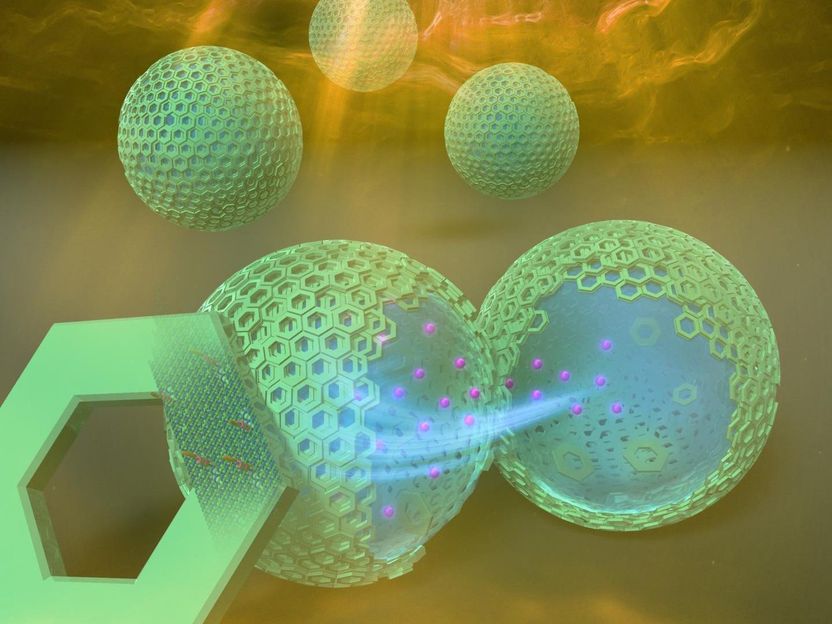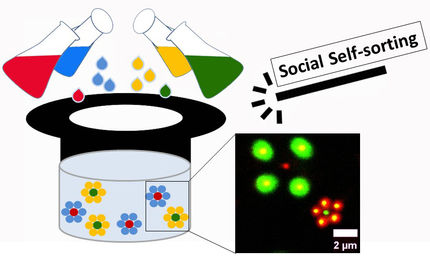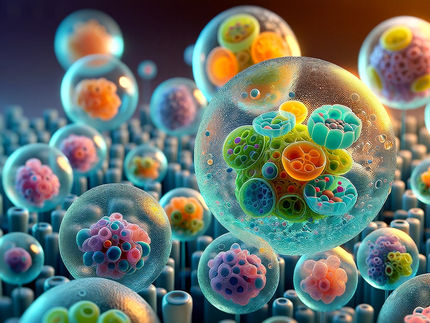Scientists develop DNA microcapsules with built-in ion channels
Advertisement
A Research group led by Tokyo Tech reports a way of constructing DNA-based microcapsules that hold great promise for the development of new functional materials and devices. They showed that tiny pores on the surface of these capsules can act as ion channels. Their study will accelerate advances in artificial cell engineering and molecular robotics, as well as nanotechnology itself.

This is a conceptual illustration of DNA nanoplate-based microcapsules.
Masahiro Takinoue of Tokyo Institute of Technology
DNA-based, self-assembled nanostructures are promising building blocks for new kinds of micro- and nanodevices for biomedical and environmental applications. Much research is currently focused on adding functionality to such structures in order to expand their versatility.
For example, engineered capsules called liposomes that have a lipid-bilayer membrane are already successfully being used as sensors, diagnostic tools and drug delivery systems. Another group of capsules that do not have a lipid bilayer but are instead composed of colloidal particle membrane, known as Pickering emulsion or colloidosomes, also have potential for many biotechnologically useful applications.
Now, a research group led by biophysicist Masahiro Takinoue of Tokyo Institute of Technology reports a new type of Pickering emulsion with the added functionality of ion channels -- an achievement that opens up new routes to designing artificial cells and molecular robots.
"For the first time, we have demonstrated ion channel function using pored DNA nanostructures without the presence of a lipid-bilayer membrane," says Takinoue.
The team's design exploits the self-assembling properties of DNA origami nanoplates. The resulting Pickering emulsions are stabilized by the amphiphilic nature of the nanoplates.
One of the most exciting implications of the study, Takinoue explains, is that it will be possible to develop stimuli-responsive systems -- ones that are based on the concept of open-close switching. Such systems could eventually be used to develop artificial neural networks mimicking the way the human brain works.
"In addition, a stimuli-responsive shape change of the DNA nanoplates could serve as a driving force for autonomous locomotion, which would be useful for the development of molecular robots," Takinoue says.
The present study highlights the team's strengths in combining DNA nanotechnology with a perspective grounded in biophysics and soft-matter physics.



















































